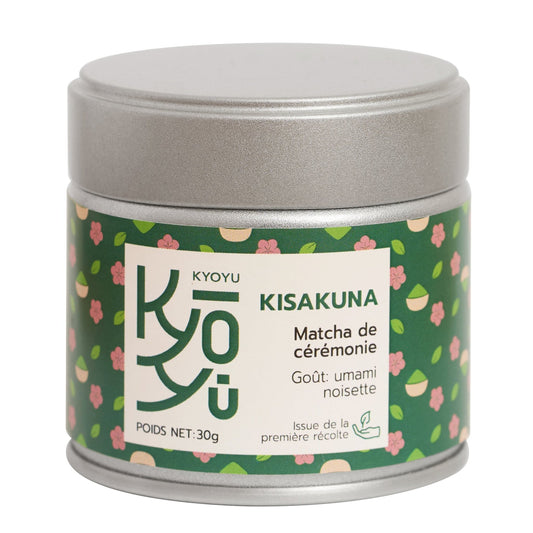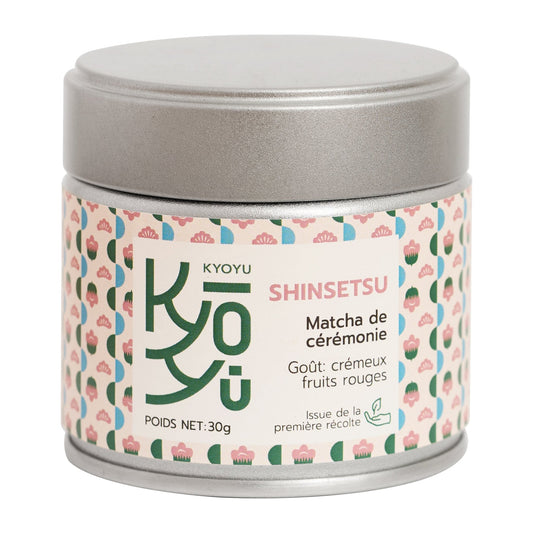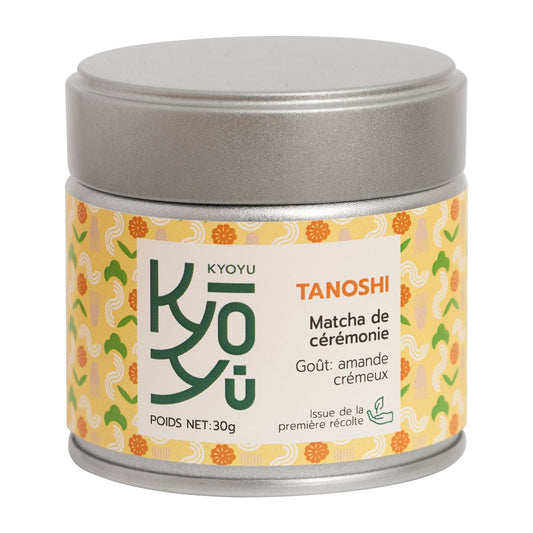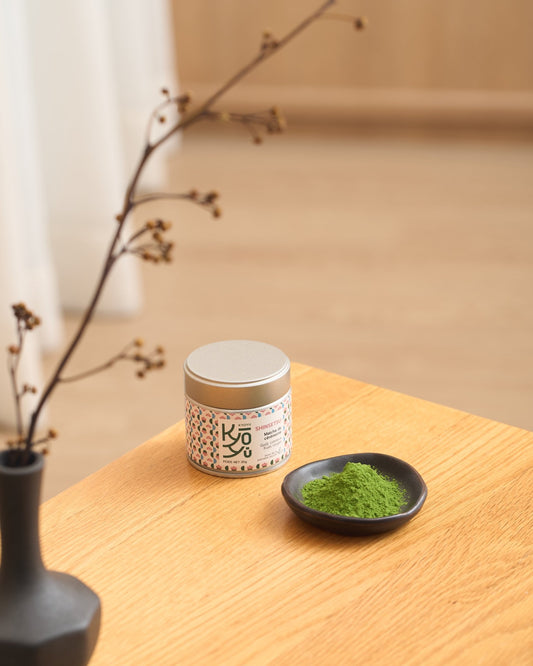Matcha bowls (Chawan in Japanese)
Share
Chawan: a diversity of shapes, textures and emotions
The matcha bowl , or chawan in Japanese , is much more than just a container. Its shape, thickness, and material influence not only the texture of the tea but also the sensory experience of the drinker.
In Japanese tradition, bowls change with the seasons to harmonize with the environment and temperature. There are also Raku bowls, highly prized for their handcrafted craftsmanship and their symbolism in the tea ceremony.
So, which bowl should you choose for your matcha? Discover in this article the different categories of chawan , their connection to the seasons, and their importance in Japanese tea culture.

1. Why is the choice of matcha bowl important?
Unlike a classic cup, the chawan is designed to:
Make whisking matcha easier with a chasen (bamboo whisk).
Better appreciate the texture and temperature of the tea .
To offer a more immersive and sensory experience , influenced by the grip and aesthetics of the bowl.
In the Japanese tea ceremony, the choice of bowl adapts to the seasons , thus strengthening the connection with nature and the present moment.
2. Matcha bowls and the seasons: adapt your choice to the climate
🍂 Fall & ❄️ Winter: Thicker and deeper bowls
As temperatures drop, the bowls used for matcha tend to be thicker and deeper . These characteristics help retain heat better and provide a comforting feel in the hand.
Winter bowls are often made of rustic ceramic with rough textures and dark colors.
Among the best known are Hagi Chawan , appreciated for their crackled glaze which evolves over time, and Raku Chawan , which provides a warm feeling in the hand.
Also available is the Oribe bowl, traditionally used in autumn. The Oribe matcha bowl is distinguished by its deep green glaze and irregular shapes. It reflects the Japanese aesthetic of wabi-sabi, linked to nature and the passage of time. Ideal for preparing matcha in a calm and warm atmosphere.
RAKU Chawan

🌸 Spring & ☀ ️ Summer: Wider and thinner bowls
When the good weather returns, we prefer wider and shallower bowls, allowing the matcha to cool more quickly.
In spring , the chawans feature light hues and floral patterns , evoking the blossoming of cherry trees.
In summer , bowls can be made of finer ceramic, porcelain or even glass , for a cooler mouthfeel.
These include the Kyo Chawan , known for their finesse and refined patterns, and the Hira Chawan , which are wider and open to allow the matcha to cool quickly.
Choosing a bowl according to the seasons allows you to optimize the tasting of matcha and strengthen harmony with your environment.
HIRA Chawan

KYO Chawan

3. Bowls with pouring spouts: a practical alternative
In addition to the classic bowls, there are spout bowls , called Katakuchi Chawan .
These bowls are particularly appreciated for:
Prepare a larger quantity of matcha (ideal for serving several people).
Make serving easier , especially for matcha lattes .
Avoid splashing when pouring matcha into a cup or glass.
If you often make matcha-based drinks , a Katakuchi Chawan might be a nice option to add to your collection.

4. Raku Bowls: An Icon of Japanese Tea
Raku bowls hold a unique place in the history of matcha. They emerged in the 16th century under the influence of Sen no Rikyū , the great master of the tea ceremony, who desired bowls that embodied the simplicity and authenticity of wabi-sabi (the beauty of imperfection and the passage of time).
Why are Raku bowls special?
Hand-Shaped : Unlike other bowls, Raku bowls are made without a potter's wheel, giving them unique, organic shapes.
Rapid cooking and sudden cooling : This creates irregular textures and sometimes cracks, enhancing their unique character.
Warm feel in hand : The porous texture of Raku makes them particularly pleasant to hold in winter.
The two main categories of Raku bowls
Kuro Raku : Black bowls, perfect for highlighting the green of the matcha.
Aka Raku : Red or brown bowls, with warmer, earthier undertones.
The Raku bowl is a must-have for tea ceremony enthusiasts and those seeking a more meditative and authentic experience in their matcha ritual.
5. How to choose your matcha bowl?
The choice of chawan depends on several factors:
The season : A thick bowl for winter, a wide bowl for summer.
Texture : Some prefer a smooth bowl, others like the rough feel of a handcrafted ceramic bowl.
Design : Minimalist, rustic, traditional or modern.
Use : For traditional preparation, a classic bowl is sufficient; for a matcha latte , a bowl with a pouring spout is more practical.
💡 Tip : A good bowl is also chosen by feel . Take the time to test the grip and feel of the bowl to find the one that suits you.
Conclusion: Which matcha bowl is best for you?
Choosing the right chawan is an important step in enhancing the matcha experience . Depending on the season, the style you're looking for, and how you drink tea, a bowl can transform a simple tasting into a true ritual .
A thick bowl for winter, a wide bowl for summer, a Raku bowl for an authentic experience, or a bowl with a spout for matcha latte... There's a chawan for everyone!








